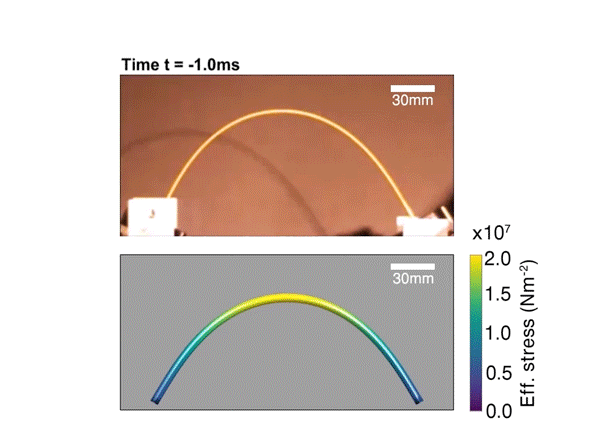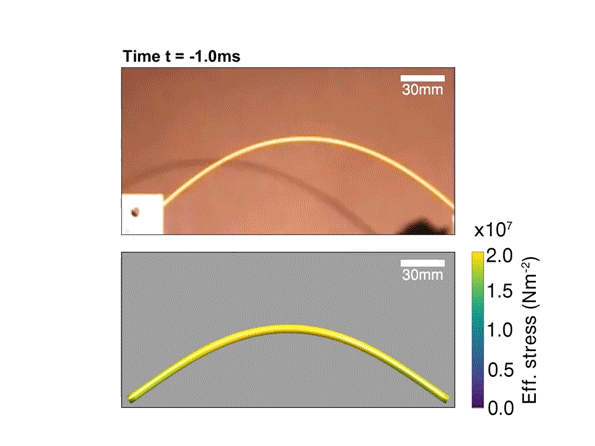Solving the spaghetti problem
If you’ve ever tried to snap dried pasta in half, you know that it’s hard to get just two even pieces; what you usually get instead is macaroni shrapnel everywhere. It turns out this is due to fundamental physical forces of the universe when applied to a straight rod. The initial break creates a snap-back effect that creates additional fractures.

Apparently, this used to drive Richard Feynman nuts. Here’s an excerpt from No Ordinary Genius: The Illustrated Richard Feynman, where computer scientist Danny Hills describes Feynman’s obsession:
Once we were making spaghetti, which was our favorite thing to eat together. Nobody else seemed to like it. Anyway, if you get a spaghetti stick and you break it, it turns out that instead of breaking it in half, it will almost always break into three pieces. Why is this true — why does it break into three pieces? We spent the next two hours coming up with crazy theories. We thought up experiments, like breaking it underwater because we thought that might dampen the sound, the vibrations. Well, we ended up at the end of a couple of hours with broken spaghetti all over the kitchen and no real good theory about why spaghetti breaks in three. A lot of fun, but I could have blackmailed him with some of his spaghetti theories, which turned out to be dead wrong!
It turns out that controlling the vibrations does have something to do with controlling the breakage, although putting the rod underwater won’t help. Two young physicists, Ronald Heisser and Vishal Patil, found that the key to breaking spaghetti rods into two pieces is to give them a good twist:
If a 10-inch-long spaghetti stick is first twisted by about 270 degrees and then bent, it will snap in two, mainly due to two effects. The snap-back, in which the stick will spring back in the opposite direction from which it was bent, is weakened in the presence of twist. And, the twist-back, where the stick will essentially unwind to its original straightened configuration, releases energy from the rod, preventing additional fractures.
“Once it breaks, you still have a snap-back because the rod wants to be straight,” Dunkel explains. “But it also doesn’t want to be twisted.”
Just as the snap-back will create a bending wave, in which the stick will wobble back and forth, the unwinding generates a “twist wave,” where the stick essentially corkscrews back and forth until it comes to rest. The twist wave travels faster than the bending wave, dissipating energy so that additional critical stress accumulations, which might cause subsequent fractures, do not occur.
“That’s why you never get this second break when you twist hard enough,” Dunkel says.

It’s not exactly practical to twist spaghetti 270 degrees before you break it in half, just to end up with a shorter noodle. And linguini, fettucine, etc., have a different physics altogether, because they deviate more strongly from the cylindrical rod shape of spaghetti. But it’s cool to have one of these everyday physics problems apparently solved through a relatively simple trick.





Stay Connected